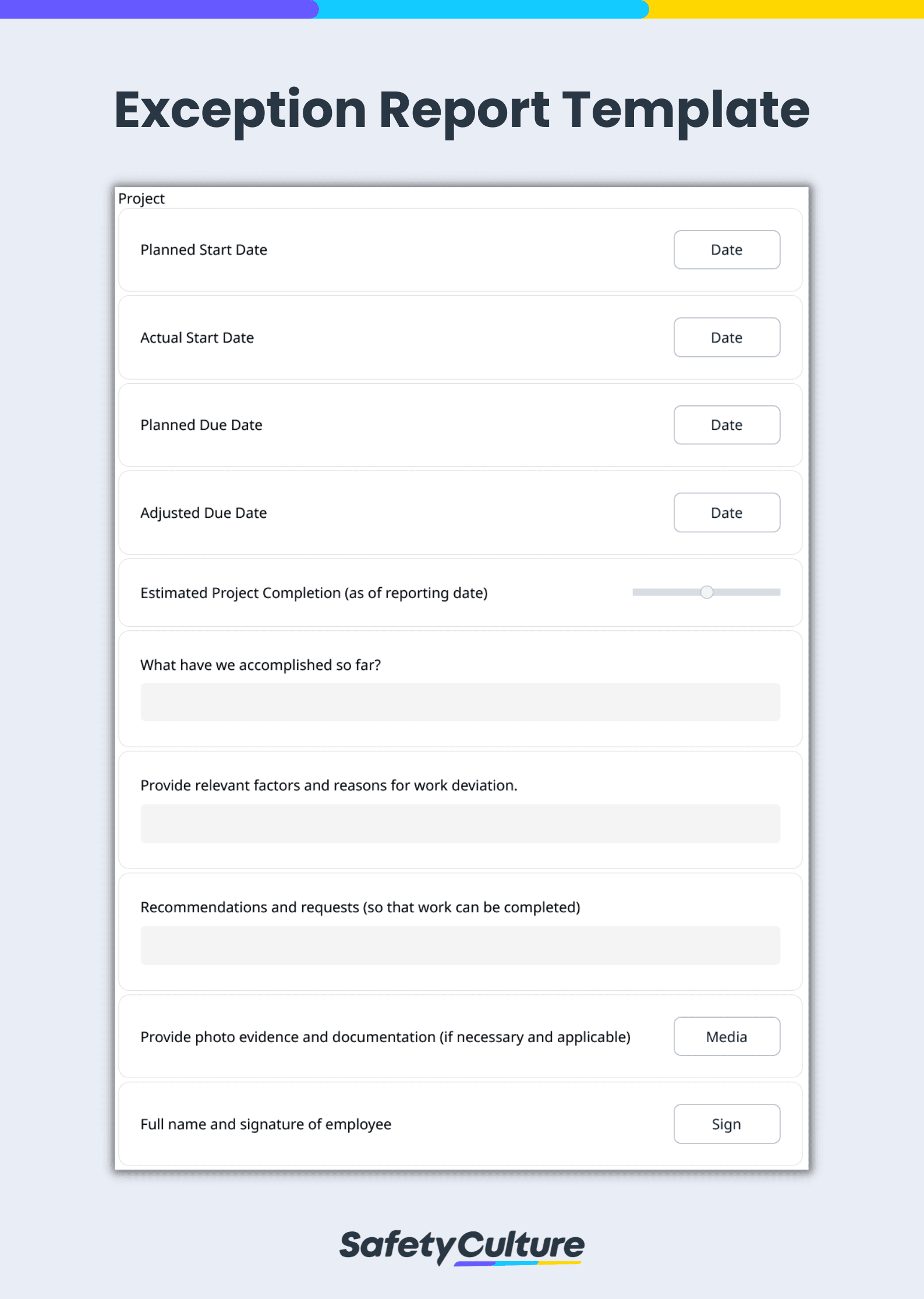What is an Exception Report?
An exception report is an internal methodology used by businesses to formally document the reasons why employees or teams fail to meet work expectations, set targets, and/or deadlines. It is often produced by project managers and team leaders and typically includes a detailed explanation of the different factors that contributed to work deviation.
In this article
When is an Exception Report Necessary?
Not all instances of work deviation immediately require an exception report. Minor deviations that do not significantly impact business operations can be dealt with through informal communication between team members and project managers. Exception reports are reserved for particular occurrences where work deviation results in considerable financial loss, poor quality management, project schedule disruptions, and breach of client-provider agreements.
Exception reporting depends on business cases, it acts as a kind of early warning system that alerts the management when the organization is at risk of having discrepancies with key performance targets. It can be provided on a daily, weekly, or monthly basis depending on the organization’s policies.
What Should an Exception Report Include?
Exception reports are needed to analyze and understand different scenarios of why deviation happened. It helps the organization to improve management processes and create actions to be implemented immediately. An exception report should be able to include the following key elements:
- timeline;
- objective;
- up-to-date accomplishments;
- relevant factors and reasons for work deviation including the stage where it occurs;
- impact of the problem;
- evidence (photo or documentation); and
- recommendations or requests in order to complete the project.
Exception Report: 5 Big Reasons Your Workplace Needs It
Exception reports are customizable, versatile, and highly adaptable. It provides value to just about any business type since it focuses on a general work concept instead of industry-specific elements and solutions.
Below are some important reasons you should start using it for your business:
Develop a flexible work culture
Workers end up feeling stressed and demoralized if they feel that their supervisors and/or managers are too rigid; sticking with set work expectations even after unforeseen circumstances have already made them unrealistic and impossible to fulfill. By letting workers complete an exception report when it is warranted, you give them a fair chance to enumerate and explain the different factors that lead to the delay or failure of their assigned project.
Recognize flaws in your SOPs
By having an internal documentation process through exception reports, you can identify and analyze common factors and frequently cited reasons for work deviation; the first step to creating long-term solutions. They can help you to track, recognize inefficient, faulty, and outdated SOPs so you can discontinue or update them to improve business processes.
Get useful insights from frontliners
Standard operating procedures and major process changes are decided mainly by upper management. Common mistake companies make, however, is the failure to involve frontline workers when creating or updating SOPs. Frontline workers have the most experience utilizing SOPs which gives them a good sense of what works and what doesn’t. Through exception reports, frontline workers can contribute to the improvement of SOPs instead of merely following them.
Improve overall accountability
For some operations, failing to meet work expectations and set deadlines immediately result in written warnings and/or disciplinary actions. By introducing exception reports, however, supervisors and managers create a dialogue with the worker which helps all of the parties involved get better insight into what really went wrong e.g. employee negligence, insufficient resources, etc. so the right solution can be introduced.
Create a database of past mistakes so preventive measures can be taken
Through the organized documentation of work deviation and internal process failures, key stakeholders can use tools and techniques and implement the execution of the appropriate control measures so the recurrence of identified issues can be avoided.




